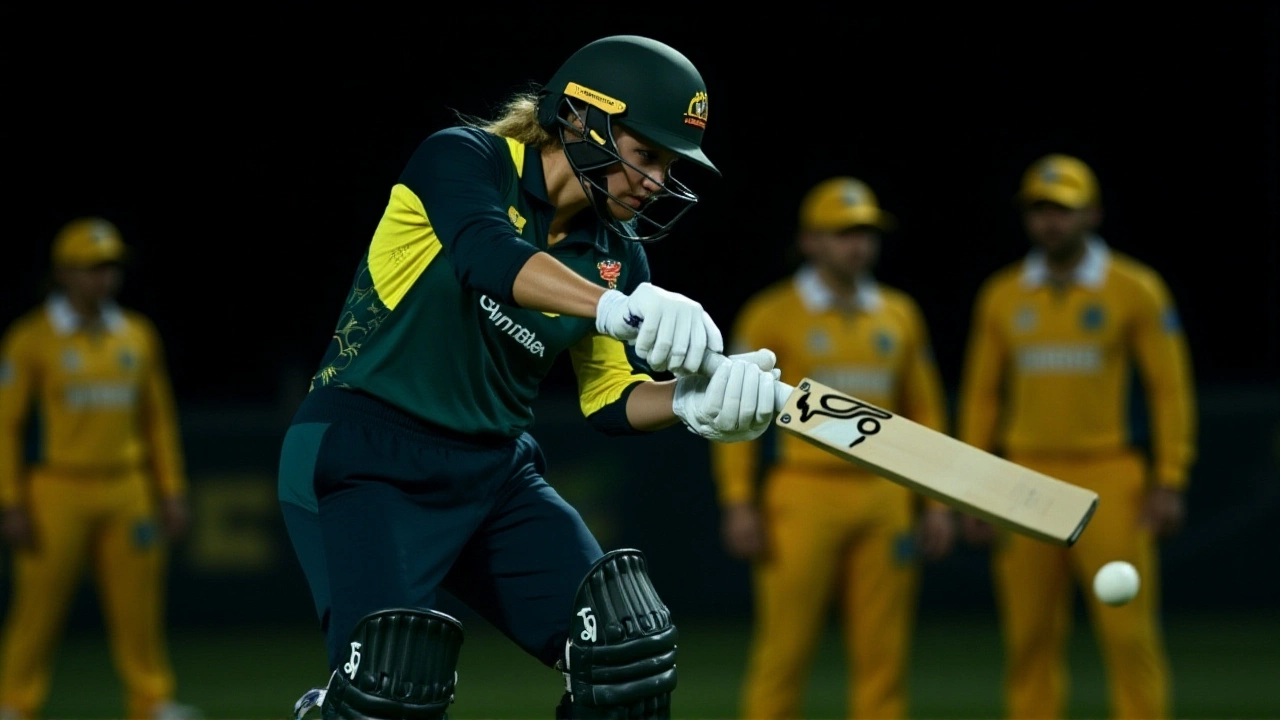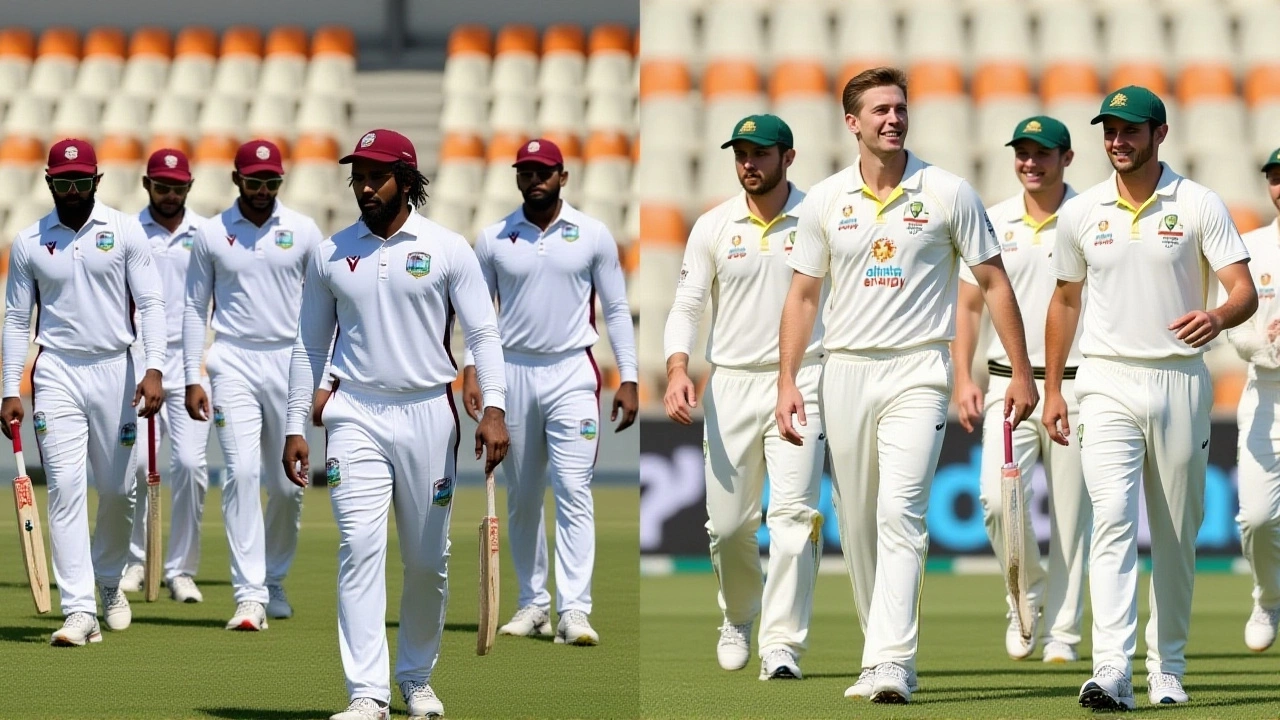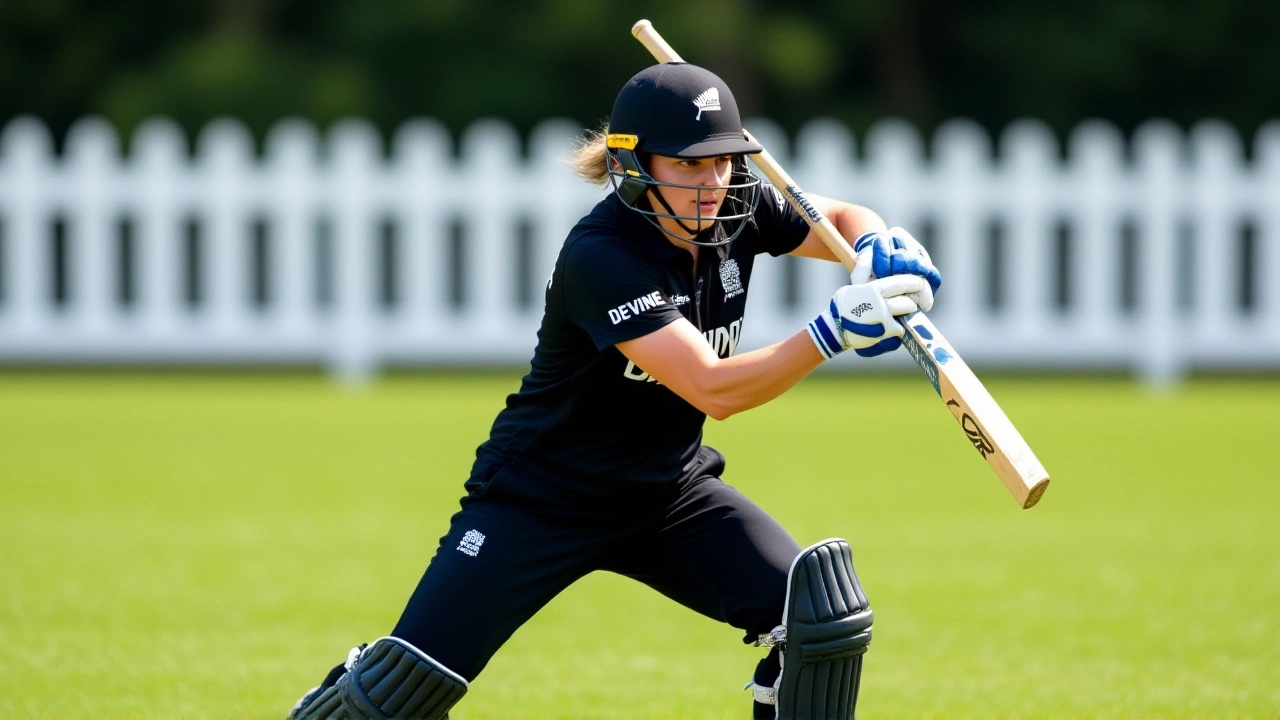 Nov, 16 2025
Nov, 16 2025
On Sunday, September 14, 2025, Australia Women completed a stunning 8-wicket victory over India Women in the first ODI of their 2025-26 tour, chasing down 282 with 35 balls to spare at an undisclosed venue in India. The win wasn’t just about the scoreboard—it was a statement. Australia’s batting lineup, led by Phoebe Litchfield’s blistering 88 and Beth Mooney’s composed 77, dismantled India’s disciplined bowling attack in just 44.1 overs. For India, it was a case of a strong total falling short against a relentless chase. The match, played under overcast skies and a tense crowd atmosphere, marked the start of a three-match series that could redefine the balance of power in women’s cricket.
India’s Batting Collapse That Wasn’t
India won the toss and elected to bat first, a decision that looked smart early on. Pratika Rawal and Smriti Mandhana opened with a 51-run stand in under eight overs, setting the tone. By the 17th over, India had raced to 100 without loss—only the third time in women’s ODIs they’d reached that mark without losing a wicket against Australia. They kept accelerating, hitting 200 in 38 overs and 250 in 46 overs. But the final 10 overs exposed a familiar flaw: too many runs coming from too few batters. Rawal’s 64 off 96 balls and Mandhana’s 58 off 63 were brilliant, but the middle order—save for Deepti Sharma’s quick 20 and Radha Yadav’s 19—struggled to find rhythm. India’s 281/7 looked competitive, but it wasn’t the 300+ total they needed against this Australian side.
Australia’s Chase: Precision Under Pressure
Australia’s reply was clinical. Alyssa Healy’s early dismissal for 27—caught behind off Kranti Goud—could’ve derailed them. Instead, Phoebe Litchfield and Ellyse Perry stitched together a 79-run partnership. Perry retired hurt on 30 with a calf strain, a worrying moment, but Litchfield didn’t flinch. Her 88 off 80 balls—10 fours, 3 sixes—was the anchor. Then came Beth Mooney, cool as ever, and Annabel Sutherland, who smashed her ODI fifty in just 47 balls. Their 100-run third-wicket stand in 87 balls turned the game into a procession. Australia reached 200 in 32 overs, 250 in 39.3 overs, and sealed the win with a six from Sutherland that sent the small Australian contingent into raptures.
Key Performers and Tactical Shifts
For India, Sneh Rana was the lone bright spot, taking 1 for 51 in 10 overs, but her economy was high. Spinners didn’t get much turn, and the pace attack—led by Kranti Goud’s 2 for 45—was expensive in the death. Australia’s Megan Schutt was the standout, claiming 2 for 45 in 7 overs, consistently hitting the seam and forcing errors. The fielding was sharp too: Ellyse Perry’s catch to dismiss Healy was textbook, and the run-outs were nearly flawless. India’s fielding, by contrast, looked sluggish in the final 15 overs, letting singles slip through and missing two easy chances.

Leadership and Mindset: A War of Words
Post-match, Harmanpreet Kaur didn’t sugarcoat it. “India believe they can beat Australia any day,” she said, a line that carried more weight than it sounded. It wasn’t defiance—it was recognition. This Indian team, younger and more fearless than the 2017 version, is no longer intimidated. And Australia’s captain, Alyssa Healy, echoed it: “This is the most stable Indian side I’ve faced. They’ve got guts.” That’s high praise from a player who’s seen India’s rise firsthand. The real story here isn’t just the scoreline—it’s the respect growing between these two teams.
What This Means for the Series
The second ODI, scheduled for September 17, already feels like a must-win for India. After this loss, they’ll need to find consistency in the middle order and tighten their death bowling. Australia, meanwhile, will be cautious about Perry’s injury but confident in their depth. The third ODI, on September 20, could be the decider. And here’s the twist: India’s A-team had already beaten Australia A 2-1 in a three-match unofficial series just days before, with Yastika Bhatia and Anika Learoyd stealing headlines. That’s not coincidence—it’s a sign of depth on both sides.

Historical Context: A New Chapter
India hadn’t beaten Australia in a home ODI since 2007. That drought ended later in this series, when India posted their highest total against Australia in women’s ODIs—292 in the second match, with Mandhana scoring 117. But in this opener, Australia’s firepower proved too much. The series has already broken records: the third ODI saw Australia post 412, the highest team total in women’s ODIs since 2022, with Mooney smashing 138 off 75 balls. This isn’t just a series—it’s a turning point. The gap is closing. The competition is fiercer than ever.
Frequently Asked Questions
Why did Australia win despite India scoring 281?
Australia’s batting depth and aggressive middle order overwhelmed India’s bowling. While India’s top order built a solid foundation, their middle order couldn’t accelerate enough. Australia’s Litchfield, Mooney, and Sutherland all scored quick, high-impact innings under pressure, and their power-hitting in the final 10 overs—averaging 12.5 runs per over—was too much for India’s tired bowlers.
How significant is Ellyse Perry’s calf injury?
Perry’s early exit is a major concern. She’s Australia’s all-rounder linchpin, contributing with both bat and ball. If she misses the next two matches, Australia loses a key finisher and a reliable medium-pacer. Her absence could force a reshuffle, possibly promoting Sutherland to number four and shifting Schutt into a more attacking role—both risky moves in high-pressure ODIs.
What does India’s A-team’s performance tell us about the senior side?
India A’s 2-1 win over Australia A just days before the senior series shows a deep talent pipeline. Players like Yastika Bhatia and Radha Yadav—both key in the A-team—are now pushing for senior spots. This isn’t just about one team improving; it’s about India building a sustainable, competitive structure. The senior side’s resilience in this series reflects that foundation.
Is this the most competitive women’s ODI series in recent years?
Absolutely. Three matches have already seen totals above 280, with two exceeding 400. The batting records are falling, and the bowling lines are adapting. Unlike past series where one side dominated, this one has seen momentum swing between both teams. With Australia’s depth and India’s emerging stars, this could be the most balanced women’s ODI series since the 2017 World Cup final.
What’s next for Australia and India in women’s cricket?
After this ODI series, both teams head into the 2026 ICC Women’s Cricket World Cup qualifiers. Australia will look to solidify their top order without Perry if needed, while India will push for consistency in middle-order partnerships. The winner of this series gains psychological advantage, but more importantly, both are now seen as genuine World Cup contenders—no longer underdogs or favorites, but equals.